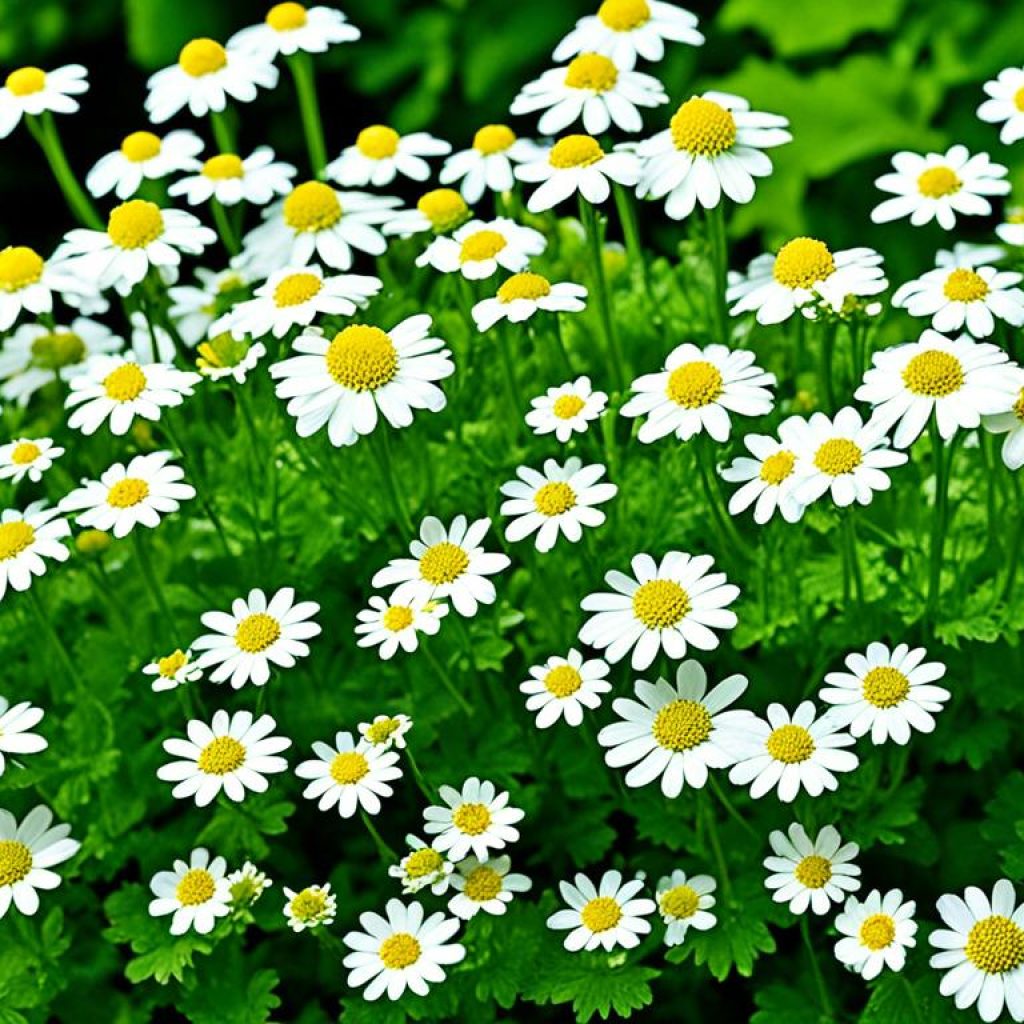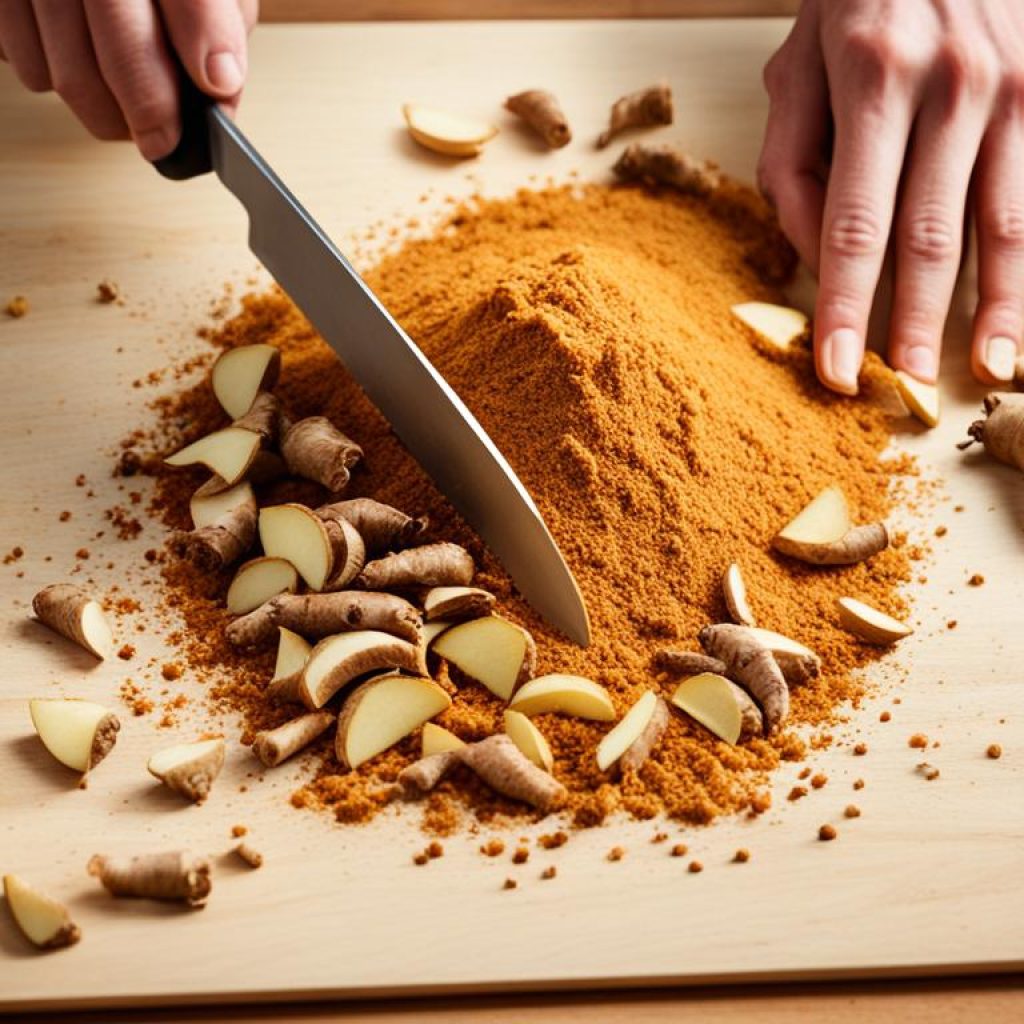Migraine attacks bring intense head pain, nausea, and light and sound sensitivity. Holistic remedies and complementary therapies are gaining popularity alongside traditional treatments.
This article looks at holistic treatments for migraines. We’ll discuss how to reduce migraine symptoms naturally. You’ll learn about avoiding trigger foods and alternative therapies for a complete treatment plan.
Key Takeaways:
- A holistic approach includes natural remedies and complementary therapies.
- Trying alternative therapies can help manage and lessen migraine symptoms.
- Stay away from trigger foods and use holistic methods for relief.
- Acupuncture, biofeedback, yoga, and aromatherapy might offer relief.
- Talk to a healthcare professional for a personalized plan.
Avoid Certain Foods
To manage migraines, consider the effects of certain foods and drinks. Specific items can trigger migraines in some people. By avoiding these triggers, you might reduce your migraine attacks.
Here are some common triggers:
- Foods with nitrates, like hot dogs and deli meats
- Chocolate
- Cheese with tyramine
- Alcohol, especially red wine
- Foods with MSG (monosodium glutamate)
- Cold foods, like ice cream
- Processed foods
- Pickled foods
- Beans
- Dried fruits
- Cultured dairy products, such as yogurt
Triggers vary among individuals. It’s key to track what you eat. A food journal helps find patterns and make diet choices.
Talk with a healthcare professional for a diet plan. They can guide you on avoiding triggers while staying healthy.
Dealing with migraines is multi-faceted. Address stress, sleep, and hormone changes too. A wide approach, including lifestyle changes, can combat migraines effectively.
| Migraine Trigger Foods | Alternative Options |
|---|---|
| Hot dogs and deli meats | Grilled chicken or turkey |
| Chocolate | Carob or dark chocolate with low tyramine |
| Cheese with tyramine | Low-tyramine cheeses like mozzarella or cream cheese |
| Alcohol, especially red wine | Non-alcoholic drinks, like herbal tea or sparkling water |
| Foods with MSG (monosodium glutamate) | MSG-free spices or homemade sauces |
| Cold foods, like ice cream | Warm or room temperature foods |
| Processed foods | Whole foods made at home |
| Pickled foods | Fresh fruit and veggies |
| Beans | Lentils or chickpeas instead |
| Dried fruits | Fresh fruit as an alternative |
| Cultured dairy products, like yogurt | Non-dairy like almond milk or coconut yogurt |
Apply Lavender Oil
Smelling lavender essential oil for migraines or putting it on your skin can help. A study in the Phytotherapy Research journal says it might make migraines less common and less severe. It could be a good preventive treatment, but more research is needed to confirm this.
Aromatherapy for migraines often uses lavender because it’s calming. It’s thought to ease the mind and body. This can lower stress and tension, which often cause migraines.
Remember to mix lavender essential oil with a carrier oil like coconut or almond oil before using it on your skin. Apply a little to your temples, forehead, or neck. Then, massage gently in circles.
“Lavender essential oil has been my go-to for migraines. The calming scent helps me relax during an attack. I always carry a bottle with me for fast relief.”
– Sarah, Migraine Sufferer
Lavender essential oil not only might help with migraines but also smells relaxing. It can lead to better sleep, less anxiety, and better overall health.
How to Use Lavender Essential Oil for Migraines:
- Smell directly from the bottle or use a few drops in a diffuser.
- Put on skin after mixing with a carrier oil.
- Mix with a carrier oil and massage into the neck and shoulders as massage oil.
It’s key to remember not everyone will find lavender oil helpful. How people react to essential oils varies. Always talk to a doctor before trying new treatments.
| Lavender Essential Oil Benefits for Migraines | How to Use | Precautions |
|---|---|---|
| Reduces the frequency and severity of migraines | – Inhale directly from the bottle or add a few drops to a diffuser – Apply topically after diluting with a carrier oil – Use as a massage oil by mixing with a carrier oil and gently massaging onto the neck and shoulders |
– Dilute before applying topically – Consult with a healthcare professional before use |
Try Acupuncture
Acupuncture is an alternative therapy known for helping with migraines and headaches. It involves inserting thin needles into the body to promote energy flow. Many studies show it can reduce the frequency and intensity of migraine attacks.
A study in 2020 showed manual acupuncture can prevent migraines better than sham acupuncture. People with regular migraines saw fewer and less severe attacks with it.
Acupuncture is great because it helps with relaxation, lowers muscle tension, and reduces pain. It aims to fix energy blockages in the body. This approach works well alongside traditional migraine treatments.
The Science behind Acupuncture
Acupuncture works by unlocking the flow of Qi, or vital energy. In Chinese medicine, Qi imbalances can cause health issues like migraines.
By focusing on points linked to the head and neck, acupuncture can ease pain and balance the body.
In Western medicine, it’s seen as a way to trigger endorphin release, which helps with pain. It also affects how our bodies signal pain, boosting our well-being.
Before trying it, you should talk to a qualified acupuncturist for a plan. They use sterile needles and may apply heat for better results. The number of sessions needed depends on how you respond to the treatment.
Always consult a healthcare provider before starting acupuncture or any new therapy. Acupuncture offers a holistic way to manage migraines. It’s an integrative method for better health.
Look for Feverfew
Feverfew is an herb used to treat migraines for a long time. People believe it has properties to lessen migraine symptoms. Some studies show it might slightly help compared to a placebo.
A study in the Journal of Alternative and Complementary Medicine suggests feverfew could stop certain brain chemicals. These chemicals often lead to migraines. Another piece in the Headache journal found it might cut down how often and bad migraines are.
Still, we need more extensive research to fully prove feverfew’s benefits. Before trying any herbal treatments, talking to a healthcare expert is important.
How to Take Feverfew
If you’re thinking about using feverfew for migraines, make sure to follow the right dose. Also, talk to your healthcare provider. Feverfew comes in capsules, tablets, liquid extracts, and tea.
Table: Summary of Feverfew
| Form of Feverfew | Recommended Dosage | Administration |
|---|---|---|
| Capsules or Tablets | 50-100 mg of standardized extract with at least 0.2-0.4% parthenolide | Take with water, following the product label instructions |
| Liquid Extract | 10-15 drops, three times a day | Mix with water or juice before drinking |
| Tea | 1 teaspoon of dried feverfew in 1 cup of hot water | Steep for 10-15 minutes, strain, and enjoy |
Remember, feverfew might affect how blood thinners and some other medicines work. If you’re on medication, tell your healthcare provider you want to try feverfew.

Feverfew seems promising as a migraine remedy, but it’s not the only option. Finding the right treatment for you is essential. This could be feverfew or another natural method.
Apply Peppermint Oil
Peppermint oil is known for its refreshing smell and cool feeling. It is being looked at as a natural migraine remedy. This oil has menthol, making it feel soothing and cool when put on the skin.
A 2019 study looked at peppermint oil for migraines. It compared peppermint oil with a fake treatment and showed good results. People using peppermint oil had fewer migraines, which were also less severe.
Peppermint oil might work because it relaxes muscles and eases tension. Migraines can come from tight muscles and narrowed blood vessels in the head. This can make migraine pain worse.
To use peppermint oil, mix a few drops with a carrier oil like jojoba. Then, rub it onto your forehead, temples, and neck. Breathing in peppermint oil’s scent or using a diffuser can also help.
Peppermint oil could be a natural migraine fix, but we need more studies. Talking to a doctor before using peppermint oil or other natural treatments is key.
Benefits of Peppermint Oil for Migraines:
- May help make migraines less frequent and severe
- Has a soothing, cool effect on the skin
- Helps relax muscles and ease tension
- Can be rubbed on skin or inhaled for relief
- Is a natural option compared to some migraine medicines
Precautions for Using Peppermint Oil:
Peppermint oil is mostly safe, but be careful:
- Try a small amount on your skin first to test for allergies or sensitivity.
- Avoid using it near your eyes or sensitive spots.
- Talk to a doctor if you are pregnant, nursing, or have health issues.
- Don’t eat peppermint oil unless a doctor says it’s okay.
It’s smart to talk with a doctor before trying new migraine treatments. They can offer advice tailored to you and help use peppermint oil safely.
Try Ginger
Ginger is often used to ease nausea and might help with migraines. A 2020 review suggests it can lessen migraine pain. Still, more study is needed to know how well it works for this purpose.
Ginger comes from the Zingiber officinale plant’s root. It’s been used in healing practices for its health perks for ages. It has gingerol, which fights inflammation and acts as an antioxidant.
A study in The Journal of Headache and Pain looked at ginger’s effect on migraine pain. People taking ginger felt better than those who took a fake pill. Ginger’s pain relief was close to sumatriptan, a usual migraine medicine.
Ginger might reduce migraine pain by blocking some inflammatory substances. It may also ease pain pathways in the brain. Plus, it could help blood vessels relax and improve blood flow, making migraines less severe and shorter.
There are several ways to use ginger for migraines:
- Add fresh ginger to your meals: Make a warm ginger tea or cook with it.
- Try ginger supplements: Talk to your doctor and pick a trusted brand. Stick to the advised dose.
- Use ginger essential oil: Applying it lightly to the temples or the back of your neck may help.
Ginger’s effects can differ among people. It might help some but not others. Always talk to a doctor before trying new treatments, especially if you have health issues or take other meds.
For more details on ginger and migraines, see this table:
| Study | Participants | Findings |
|---|---|---|
| Study 1 | 50 individuals with migraines | Ginger significantly lowered migraine pain versus a placebo. |
| Study 2 | 100 individuals with chronic migraines | Using ginger reduced how often and how bad the migraines were. |
| Study 3 | 60 individuals with recurrent migraines | Ginger helped with migraine side effects like nausea and throwing up. |
Ginger shows potential as a migraine treatment, but we need more research for full certainty. A well-rounded migraine plan might include lifestyle and diet changes, stress management, and other treatments. Talk to your healthcare provider about what’s best for you.

Sign up for Yoga
Yoga is a practice that mixes breathing, meditation, and physical moves. It can help with migraines, making them less frequent, shorter, and less intense. Adding yoga to your everyday life can be a complete way to handle migraines and ease symptoms.
A 2015 study showed yoga helps as an extra therapy for migraines. It could lower anxiety, ease tension in critical areas, and better vascular health.
Yoga focuses on gentle moves, deep breaths, and being mindful. This can lessen stress and boost relaxation, important for dealing with migraines. As a practice for both mind and body, it also lifts overall health and strengthens the mind-body link, aiding in migraine relief.
Going to yoga classes or watching online videos can offer help on doing it right. Start slow and pick poses that feel good for you. Listening to your body and caring for yourself are key to getting the most out of yoga for migraines.
Think about joining a yoga class or looking up online materials to add yoga into your migraine care strategy. Make sure to talk to a doctor before you begin any new workout or therapy option.
Benefits of Yoga for Migraines:
- Reduces stress and anxiety
- Enhances relaxation and mindfulness
- Improves blood circulation
- Relieves tension in migraine-trigger areas
- Promotes overall well-being
Try Biofeedback
Biofeedback is a way to control how your body reacts to stress, helping with migraines. It’s a safe choice compared to medicine, according to recent studies. This method teaches you how to handle stress better.
This leads to fewer migraines and a happier life overall.
Biofeedback for migraines uses sensors to track your heart rate and more. You see your body’s stress responses in real time. Then, you learn how to control those responses.
Doing this, you can lessen how often and how bad your migraines are.
A 2019 study in the Integrative Health Journal showed biofeedback really works. People who tried it had fewer and less severe migraines. Even after the study, if they kept at it, they continued to feel better.
“Biofeedback gives you the power to control your stress reactions,” says Dr. Sarah Thompson. “It helps stop the stress-migraine cycle.”
Biofeedback complements other migraine treatments well. Always talk to a doctor skilled in biofeedback to find the best way to manage your migraines. With regular use and expert advice, biofeedback can be a key part of your migraine toolkit.
Conclusion
Holistic treatments for migraines are a promising way to manage symptoms. They can offer extra relief alongside traditional medicine. These include avoiding certain foods and trying essential oils and herbal supplements.
Yoga, acupuncture, and biofeedback are good too. They treat the whole person, not just migraines. They help correct imbalances and improve overall health.
But remember, everyone is different. What helps one person might not help another. It’s key to talk to a healthcare professional to make a plan that works for you. By doing this, you up your chances of finding relief and living better.

